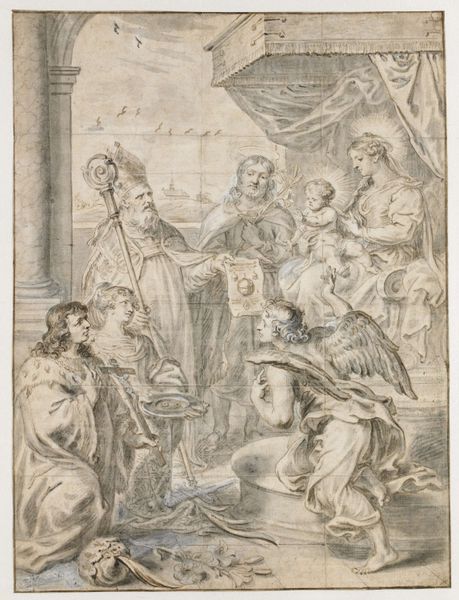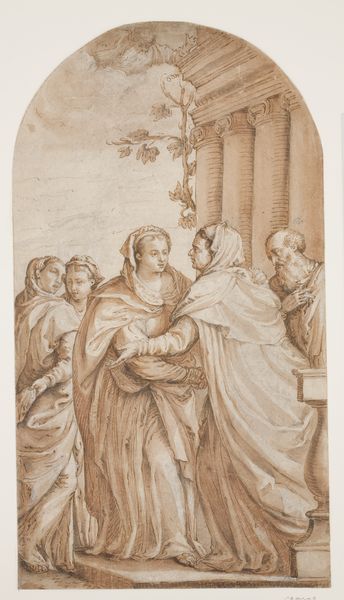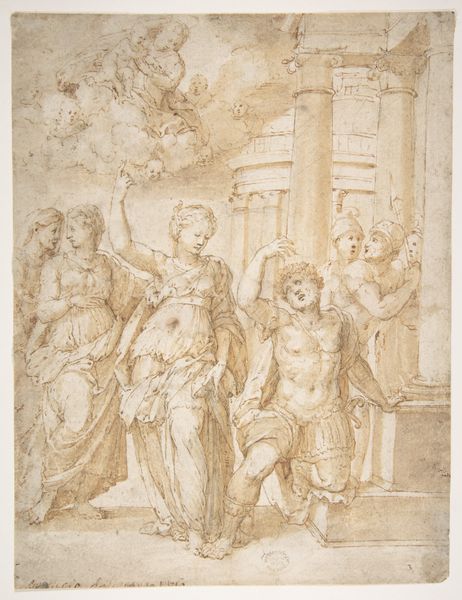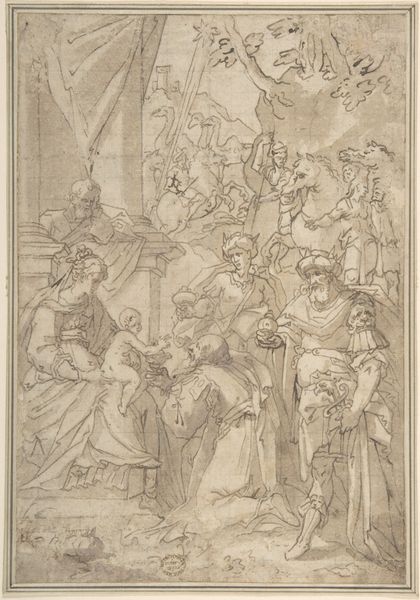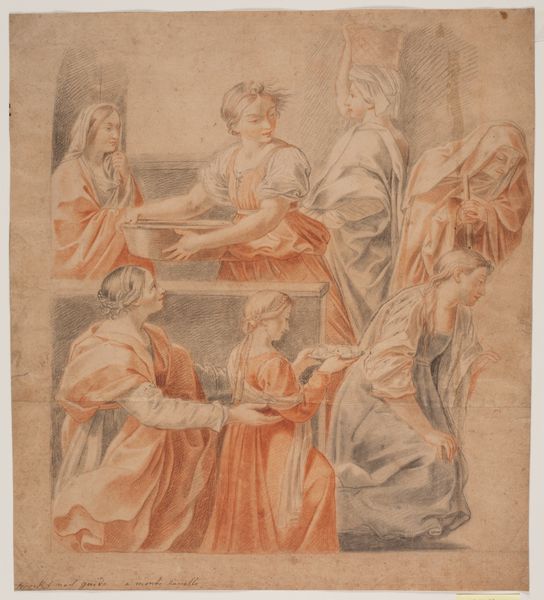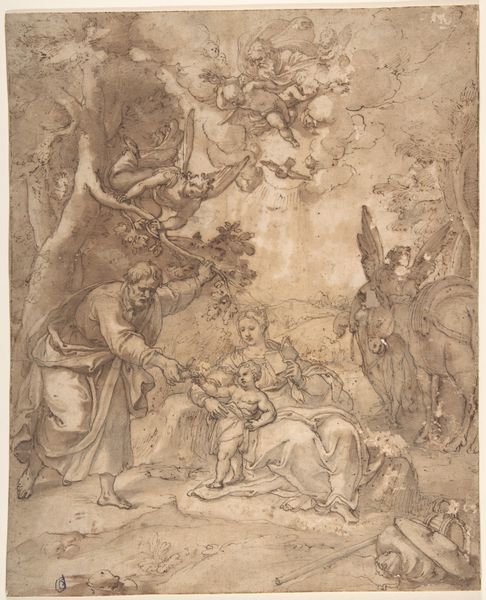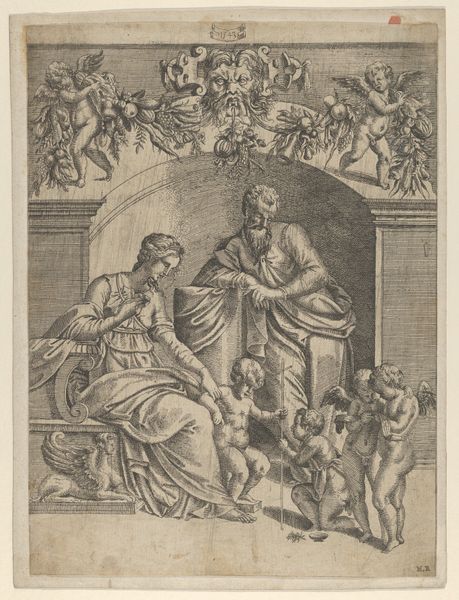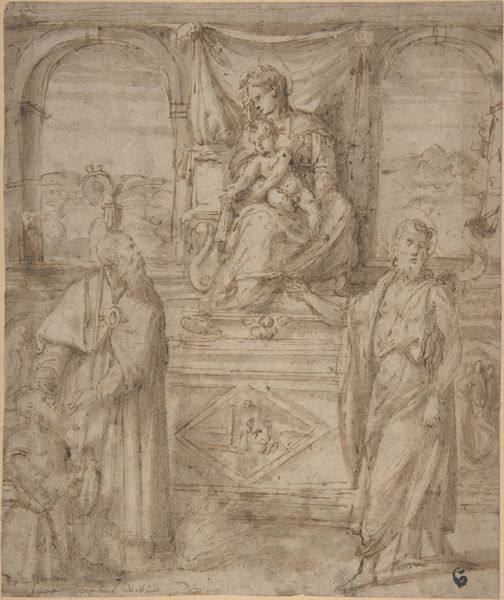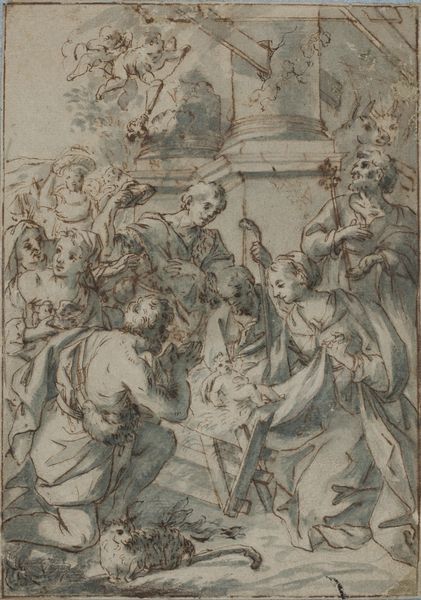
drawing, charcoal
#
portrait
#
drawing
#
charcoal drawing
#
figuration
#
11_renaissance
#
charcoal
#
italian-renaissance
Dimensions: 300 mm (height) x 213 mm (width) (bladmaal)
Curator: Here we have "Madonna med barnet ved siden," created around 1596 by Johann Freyberger. It’s held in the collection of the SMK, the National Gallery of Denmark. Editor: The use of charcoal is captivating! The soft textures create an ethereal, dreamlike quality to the religious scene depicted here. The figures, especially the angels floating above, appear to emerge from the paper. Curator: Precisely. Freyberger employed charcoal to craft a portrait that adheres to the artistic conventions prevalent during the Italian Renaissance. He portrays the Madonna and Child flanked by figures, which serves to connect religious devotion with the refined artistic taste of the era. Editor: Considering this as a drawing, not painting or sculpture, focuses on its materiality. How much effort was placed in such complex design, as there’s significant skill required to produce something this nuanced. Were such drawings merely functional as drafts, or esteemed as ends in themselves? Curator: That is one central point. Such drawings served multifaceted roles, from preparatory sketches for larger commissions to independent works for collectors. The lines' sensitivity, however, conveys devotion; the artist and the patron may have seen them as precious due to their association with the church. Editor: So its preciousness is linked more to the context it represents than the labour and materials which produce it. The use of the charcoal provides an interesting depth in tone, almost mimicking a dusty and aged marble material. Curator: Indeed. It captures a devotional sentiment characteristic of the Renaissance. In addition, this artwork reflects broader changes concerning patronage during that period and how those in the church wished to represent themselves and those around them. Editor: Understanding the cost of producing and conserving drawings also reveals their elevated position as art. Looking closer into what we see as an informal drawing offers insights into skill, labour, material, class and the religious implications embedded in the drawing itself. Curator: Considering those parameters we’ve laid, hopefully people looking and hearing are inspired to come up with fresh analyses around such works. Editor: Absolutely! To notice details within and without a seemingly common artwork that provide broader discussions.
Comments
No comments
Be the first to comment and join the conversation on the ultimate creative platform.
